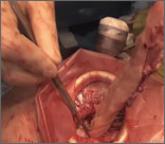According to Dr. Kaunitz’s summary of the findings of Huh and colleagues,1 the population group included women with low-grade squamous intraepithelial lesions (LSIL) or high-grade squamous intraepithelial lesions (HSIL) (ie, anything above atypical cells of undetermined significance [ASCUS]), along with women who tested positive for human papillomavirus (HPV) 16/18, regardless of cytology.
It would have been useful to have the LSIL and HSIL populations (independent or dependent of HPV status) broken down into subgroups.
The expert commentary does not indicate whether the 2.7% of biopsy-proven cervical intraepithelial neoplasia (CIN) 2 and CIN 3 were predominantly confined to women with HSIL or equally prevalent in the LSIL population.
Without this information, I am not convinced that LSIL requires a random biopsy when colposcopy is adequate and normal, regardless of HPV status.
Jonathan Kew
Maitland, New South Wales, Australia
Reference
1. Huh WK, Sideri M, Stoler M, Zhang G, Feldman R, Behrens CM. Relevance of random biopsy at the transformation zone when colposcopy is negative. Obstet Gynecol. 2014;124(4):670–678.
For someone who has done colposcopy for about 35 years, I find the conclusions of Huh and colleagues nonsensical. If the squamocolumnar junction is visible and an endocervical curettage is done, this is adequate. Performing random biopsies takes us back to the days before we had the colposcope. I was there, and I’m not proud of how we handled abnormal Pap results.
Another issue: If you find severe dysplasia on random biopsy in a 40-year-old woman, how and what do you treat? Is this a case of treating the lab and not the patient? Or is this a case of inadequately trained gynecologists and/or pathologists?
Anton Strocel, MD
Grand Blanc, Michigan
I thank Dr. Kew and Dr. Strocel for their interest in this commentary on the value of random biopsies during colposcopy when lesions are not visualized. Dr. Kew is correct that the authors did not separate findings in women with low-grade versus high-grade intraepithelial cytology. Dr. Strocel refers to the value of clinical experience when performing colposcopy. Both the current article by Huh and colleagues,1 as well an earlier high-quality report by Gage and colleagues,2 point out that, even in skilled hands, colposcopy is not as sensitive in detecting CIN as we have believed in the past. These reports present convincing evidence that, regardless of clinical experience, when no lesion is seen at the time of colposcopy, performing one or two random biopsies substantially increases diagnostic yield of clinically actionable (CIN 2 or worse) disease.
References
1. Huh WK, Sideri M, Stoler M, Zhang G, Feldman R, Behrens CM. Relevance of random biopsy at the transformation zone when colposcopy is negative. Obstet Gynecol. 2014;124(4):670–678.
2. Gage JC, Hanson VW, Abbey K, et al. Number of cervical biopsies and sensitivity of colposcopy. Obstet Gynecol. 2006;108(2):264–272.
Thanks for an interesting discussion on conjugated estrogen/bazedoxifene (CE/BZA; Duavee). I note that:
- CE/BZA is manufactured by Pfizer
- Dr. JoAnn Pinkerton, who is interviewed by Anne Moore, DNP, APN, is affiliated with Pfizer, and
- CE/BZA costs $120 per month.
Since menopausal symptoms are caused by the decreased production of ovarian estradiol, why not prescribe estradiol 0.5–1 mg, which costs only $4 monthly?
Another point to consider: Over several decades of providing care to ethnically diverse women, my observation is that Japanese/Korean and Latina women report far fewer hot flushes than their white sisters.
I believe that it is because of their soy and yam intake. I personally eat about 0.25 lb of tofu per week. It can be diced for salad or soup or served with soy sauce, ginger, and bonito (fish) flakes. It can also be crushed and mixed with lean ground beef, pork, chicken, or turkey to make lean, healthy meatloaf.
Tofu is rich in phytoestrogens, lowers cholesterol, and promotes local soy farmers—a win-win situation.
Yasuo Ishida, MD
St. Louis, Missouri
Dr. Ishida raises an important issue of managing conflicts of interest in medical publications. Dr. Ishida notes that, in the past, Dr. Pinkerton was supported by Pfizer, the company that manufactures (CE/BZA, Duavee). Dr. Ishida also points out that, in a recent OBG Management article, Dr. Pinkerton provided her clinical perspective on the use of CE/BZA in practice.
Often, with a new medication, the physicians with the most expertise in using it have helped with key clinical trials. The results of these trials provide the basis for FDA approval of the medication. Prior to FDA approval of a drug, only experts involved in the clinical trial have first-hand experience with the new treatment.



